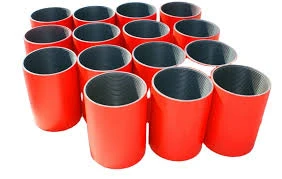- Afrikaans
- Albanian
- Amharic
- Arabic
- Armenian
- Azerbaijani
- Basque
- Belarusian
- Bengali
- Bosnian
- Bulgarian
- Catalan
- Cebuano
- Corsican
- Croatian
- Czech
- Danish
- Dutch
- English
- Esperanto
- Estonian
- Finnish
- French
- Frisian
- Galician
- Georgian
- German
- Greek
- Gujarati
- Haitian Creole
- hausa
- hawaiian
- Hebrew
- Hindi
- Miao
- Hungarian
- Icelandic
- igbo
- Indonesian
- irish
- Italian
- Japanese
- Javanese
- Kannada
- kazakh
- Khmer
- Rwandese
- Korean
- Kurdish
- Kyrgyz
- Lao
- Latin
- Latvian
- Lithuanian
- Luxembourgish
- Macedonian
- Malgashi
- Malay
- Malayalam
- Maltese
- Maori
- Marathi
- Mongolian
- Myanmar
- Nepali
- Norwegian
- Norwegian
- Occitan
- Pashto
- Persian
- Polish
- Portuguese
- Punjabi
- Romanian
- Russian
- Samoan
- Scottish Gaelic
- Serbian
- Sesotho
- Shona
- Sindhi
- Sinhala
- Slovak
- Slovenian
- Somali
- Spanish
- Sundanese
- Swahili
- Swedish
- Tagalog
- Tajik
- Tamil
- Tatar
- Telugu
- Thai
- Turkish
- Turkmen
- Ukrainian
- Urdu
- Uighur
- Uzbek
- Vietnamese
- Welsh
- Bantu
- Yiddish
- Yoruba
- Zulu
what is the difference between casing and tubing?
Understanding the Difference Between Casing and Tubing in Oil and Gas Drilling
In the oil and gas industry, the terms casing and tubing are often used to describe two essential components of well construction. While both are critical for the extraction of hydrocarbons, they serve different purposes within the drilling and production processes. Understanding the distinctions between casing and tubing is crucial for anyone involved in the oil and gas sector, from engineers to field technicians.
Casing The Protective Barrier
Casing refers to the series of steel pipes that are inserted into a well to provide structural support and protect against the collapse of the wellbore. After drilling a well to a designated depth, the borehole is lined with casing to ensure stability. This casing also prevents the intrusion of water or other contaminants into the well, protecting both the drilling site and surrounding ecosystems.
Casing is typically installed in sections, with each section connected by welds or threaded couplings. The most common types include surface casing, intermediate casing, and production casing. Surface casing is installed at shallow depths to protect groundwater and provide structural integrity for the wellhead. Intermediate casing is used for deeper wells to isolate pressure zones, while production casing is installed just above the hydrocarbon-bearing formation to facilitate extraction.
An important aspect of casing is its ability to withstand high pressures and corrosive environments. Casing materials are specifically designed to meet the challenges posed by different geological conditions, ensuring that the well remains safe throughout its operational life.
Tubing The Production Pathway
what is the difference between casing and tubing?

In contrast, tubing is a smaller diameter pipe that runs inside the casing and serves as the conduit for hydrocarbons to flow from the reservoir to the surface. Once the well is completed and the casing has been installed, tubing is inserted to extract oil or gas. Tubing is crucial for production efficiency, as it allows for the controlled flow of hydrocarbons while minimizing the influx of unwanted fluids like water and gas.
The designing of tubing systems is equally meticulous. Tubing must be strong enough to withstand the pressure of the fluids being produced, yet flexible enough to accommodate the thermal expansion that can occur during extraction. It often features a range of sizes and wall thicknesses, depending on the well depth, production rates, and expected conditions.
Unlike casing, tubing can be removed and replaced relatively easily. This is important for maintenance, as tubing can wear out or get damaged over time due to erosive effects or mechanical failures during operation.
Key Differences and Conclusion
In summary, while both casing and tubing are vital to well construction and hydrocarbon production, their functions differ significantly. Casing is primarily a protective structure that stabilizes the well and prevents contamination, while tubing serves as the pathway for resource extraction. Casing is larger in diameter and more robust, designed to withstand high pressures and external forces, whereas tubing needs to facilitate the flow of oil or gas to the surface.
Understanding these differences not only aids in the operational efficiency of oil and gas production but also emphasizes the significance of each component in ensuring safe and sustainable extraction practices. As the industry continues to evolve, innovations in casing and tubing technology will likely enhance their performance, thereby supporting a more effective and environmentally conscious approach to hydrocarbon production.
-
Well Casing Extension Couplings – Applications and InstallationNewsJun.06,2025
-
Types of Crossover Subs in Drilling & CompletionNewsJun.06,2025
-
Key Features of High-Quality Tubing Pup JointsNewsJun.06,2025
-
Installation and Maintenance Tips for Steel Couplings for PipeNewsJun.06,2025
-
How to Select the Right Pup Joint for Oil & Gas OperationsNewsJun.06,2025
-
Applications of Stainless Steel Pipe CouplingsNewsJun.06,2025







